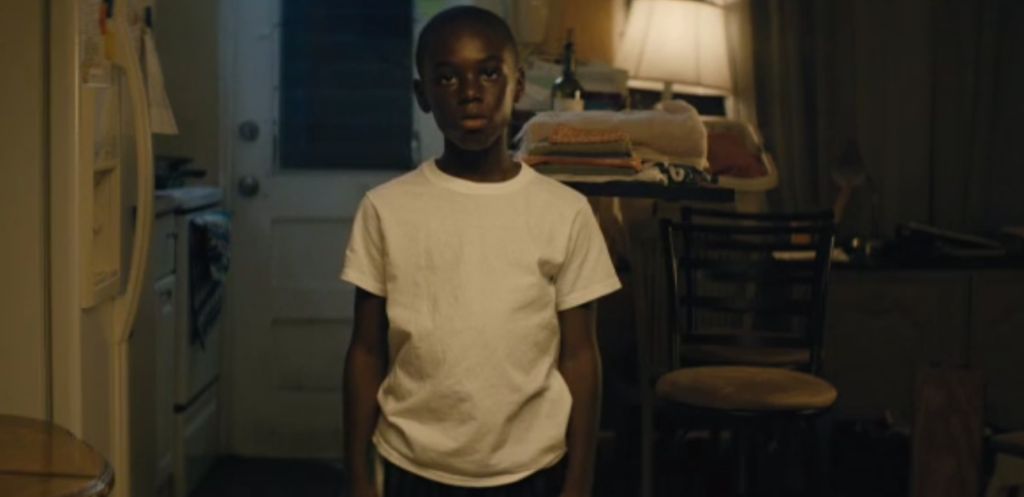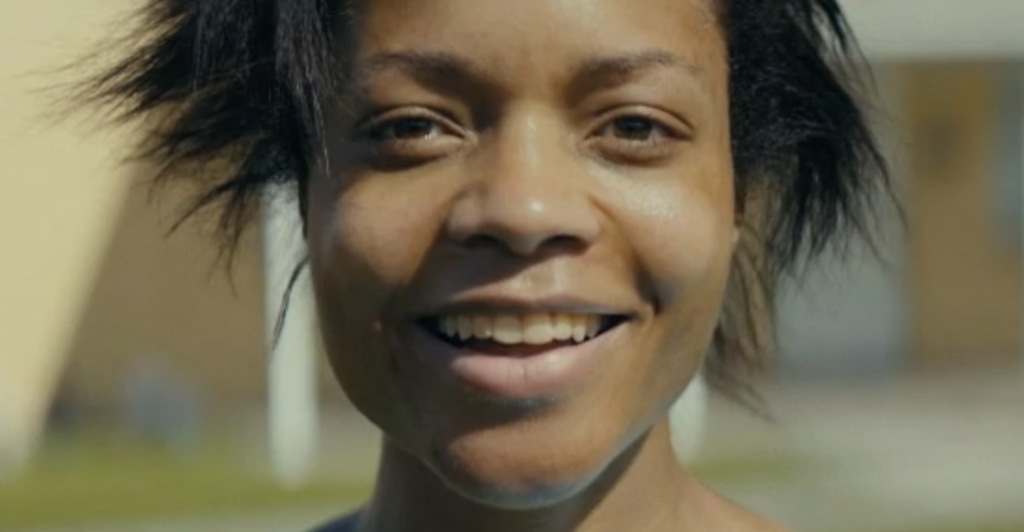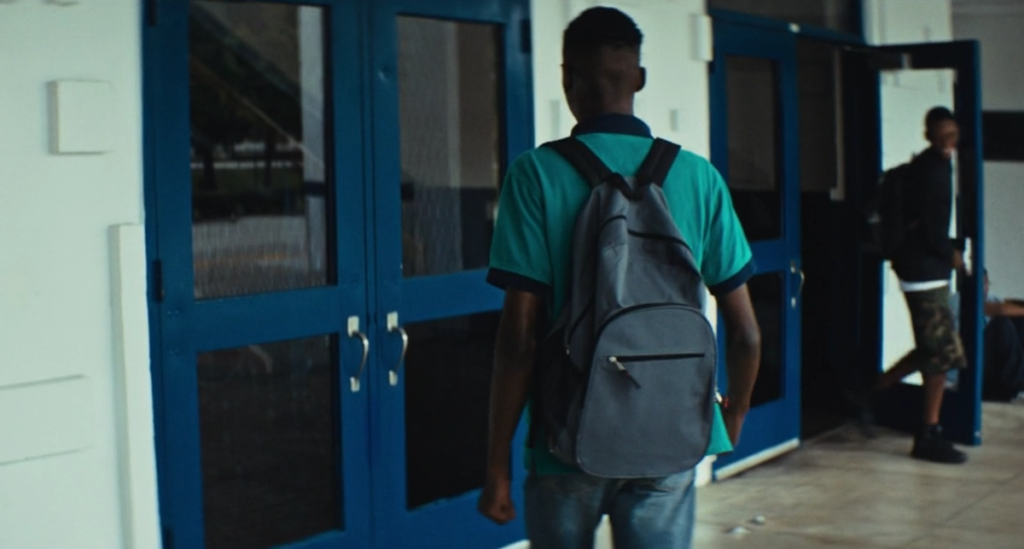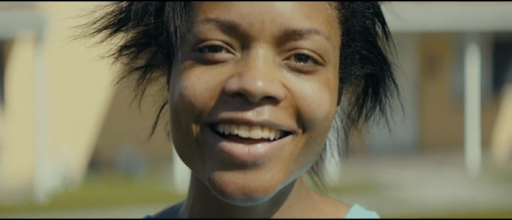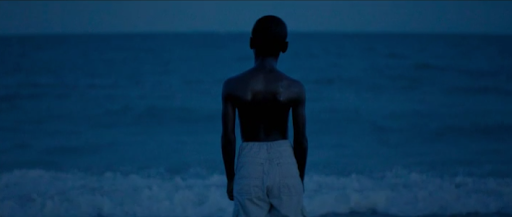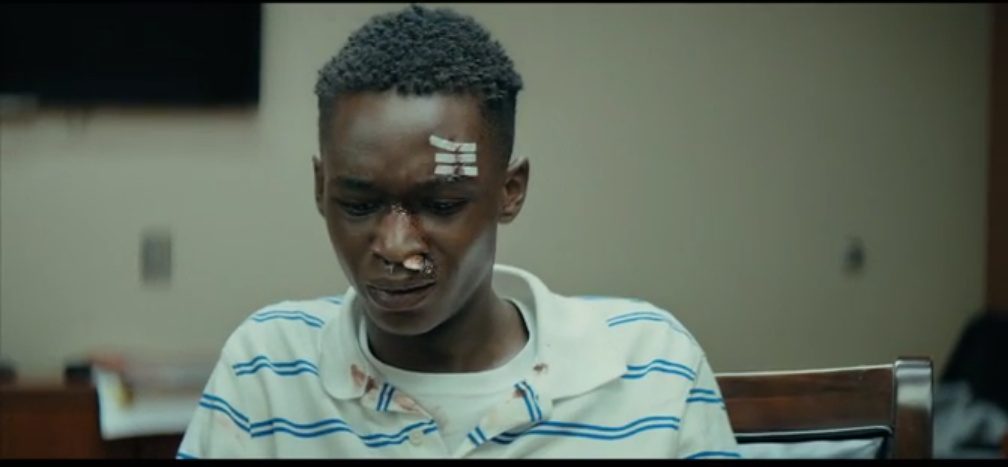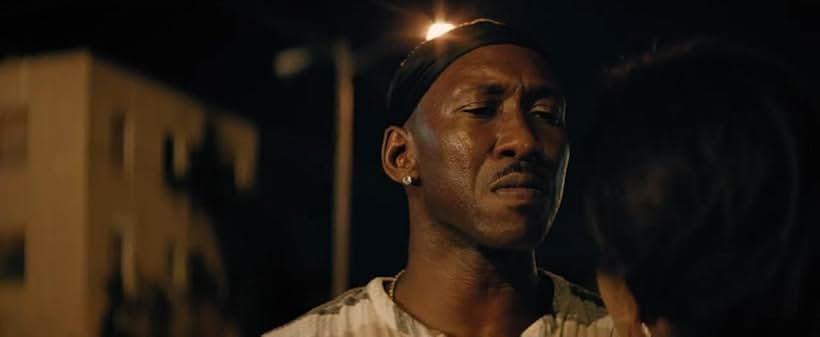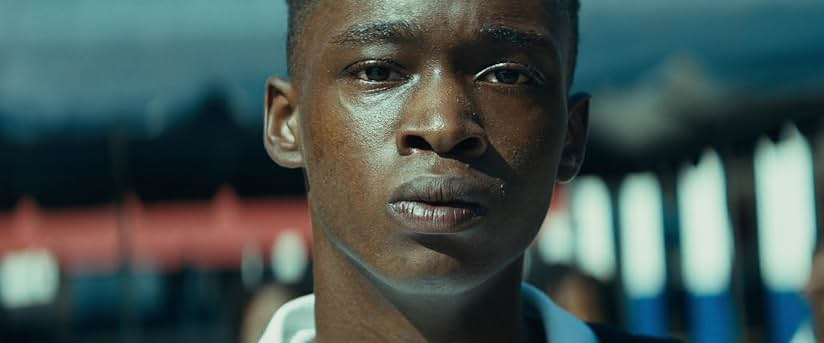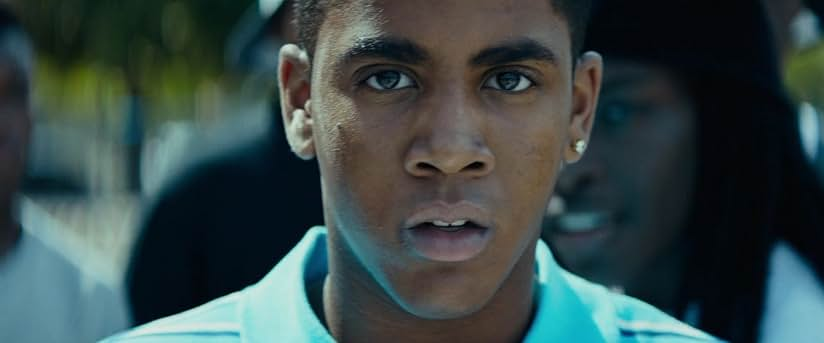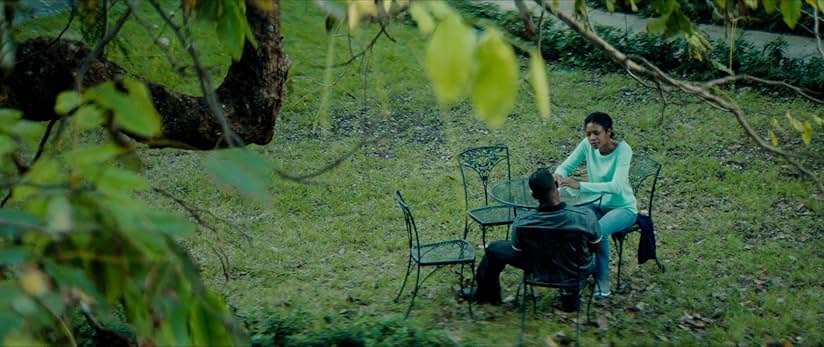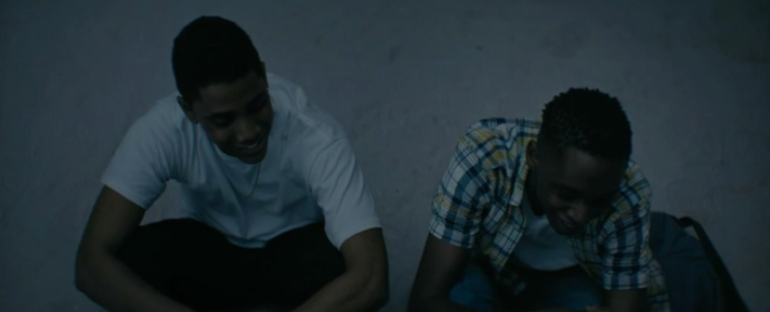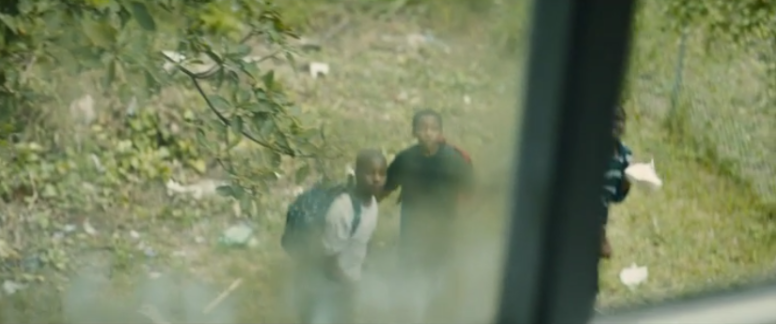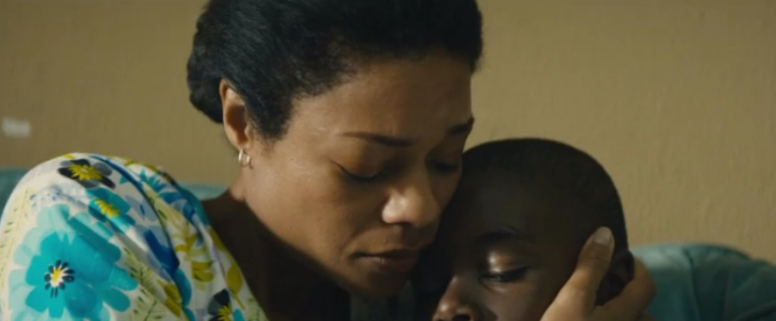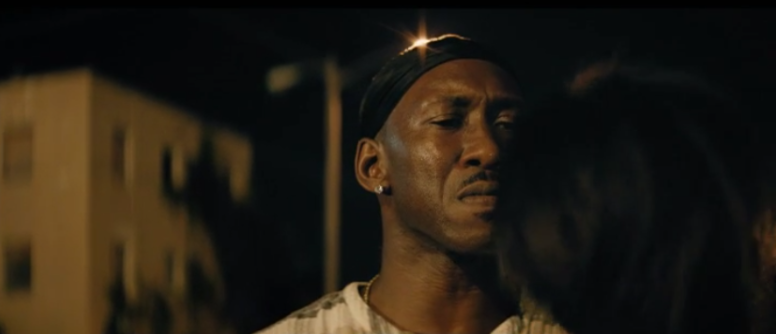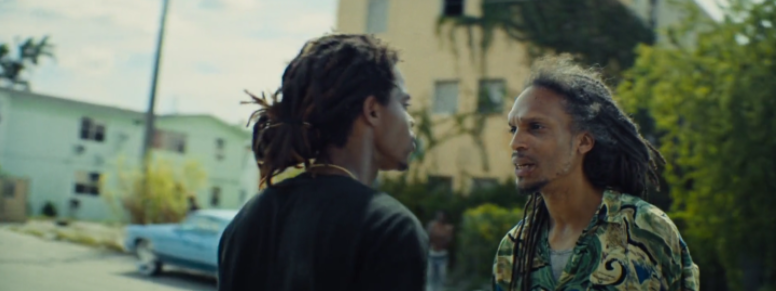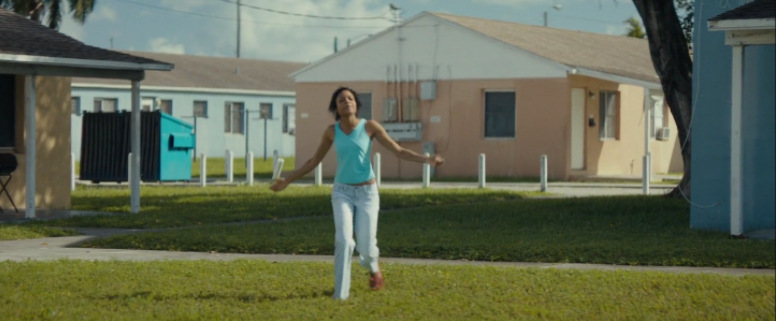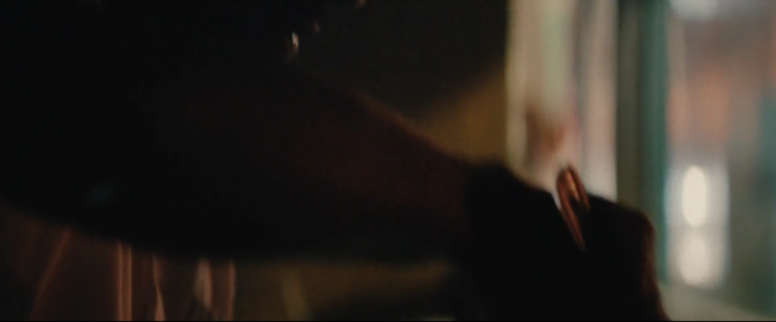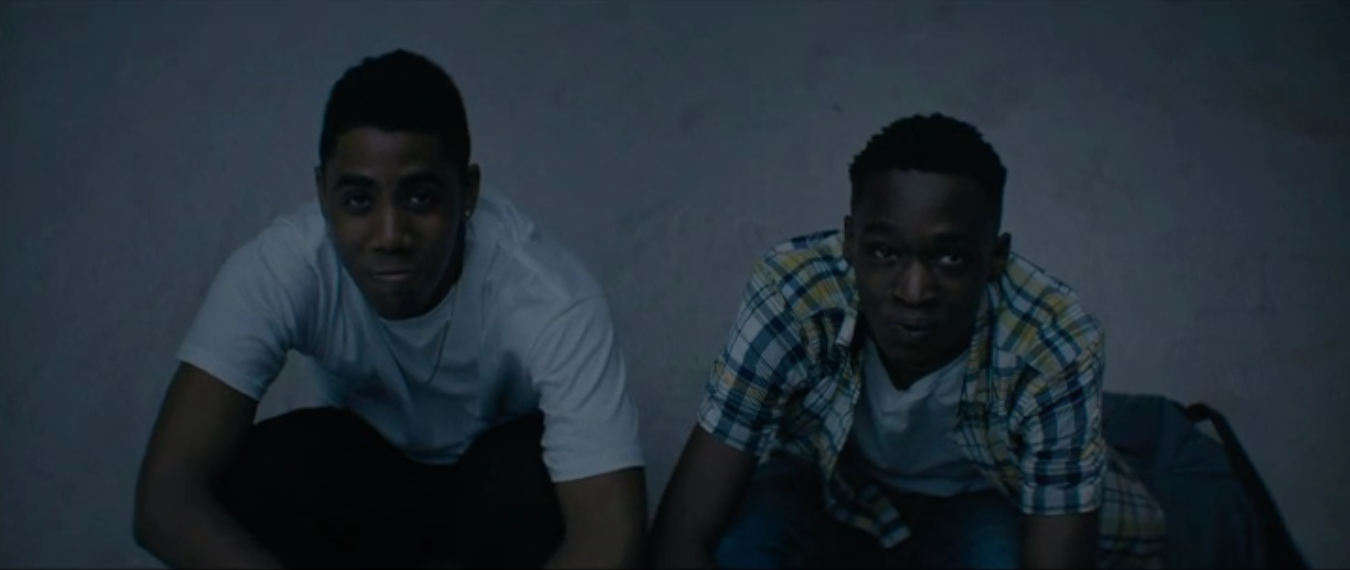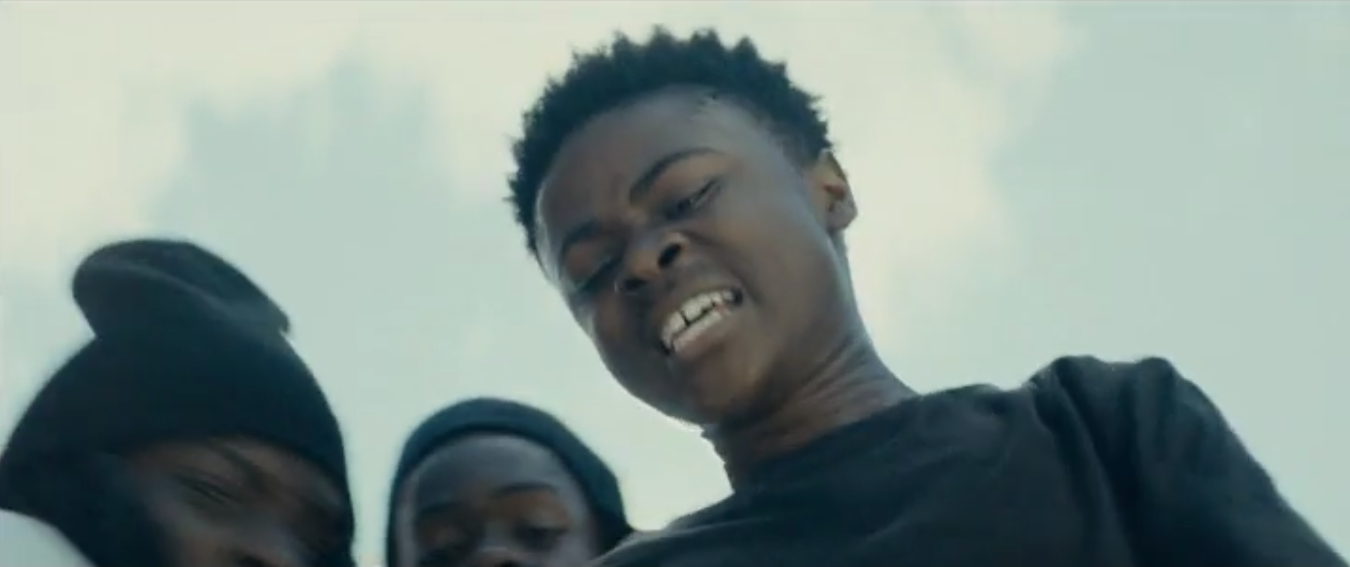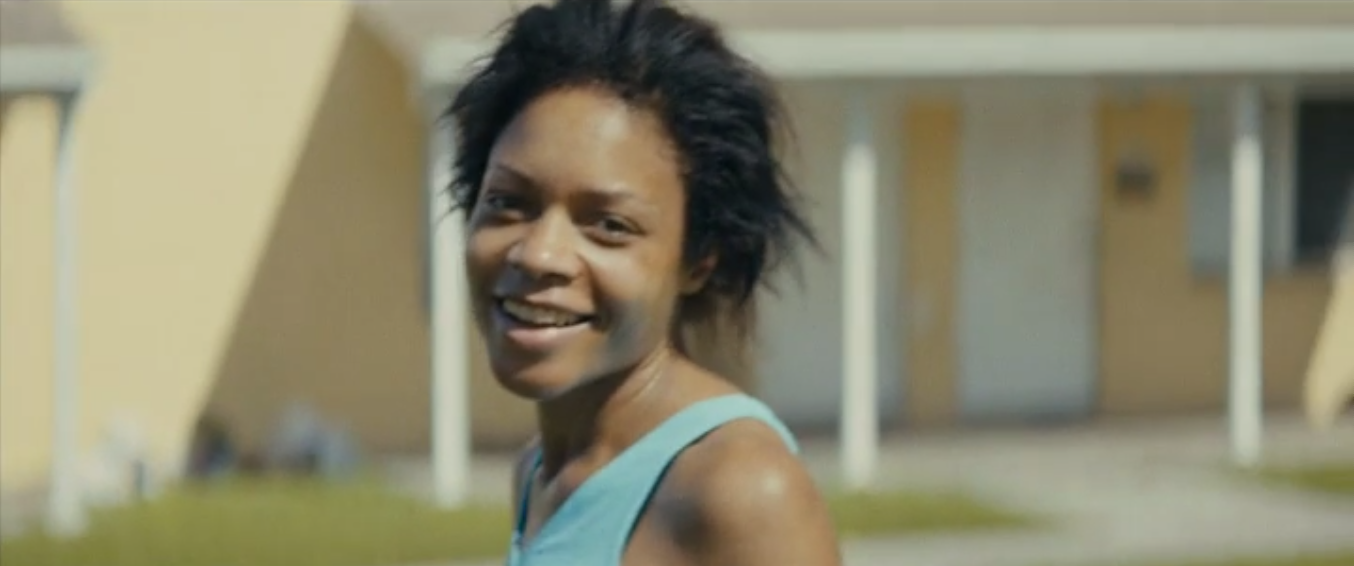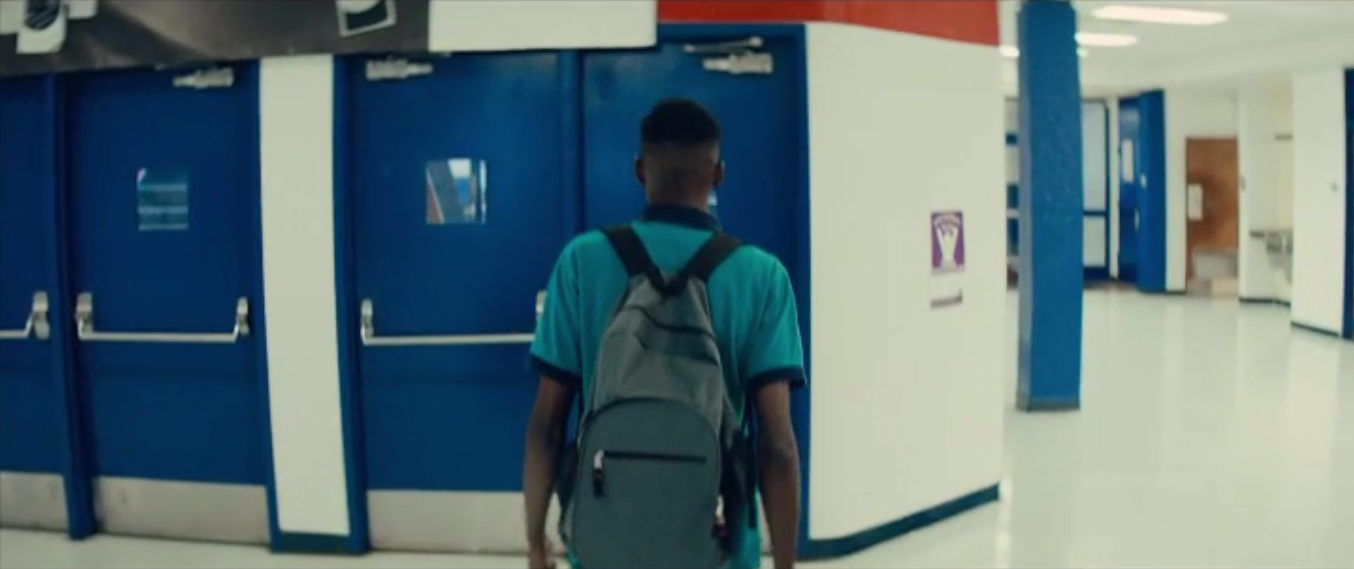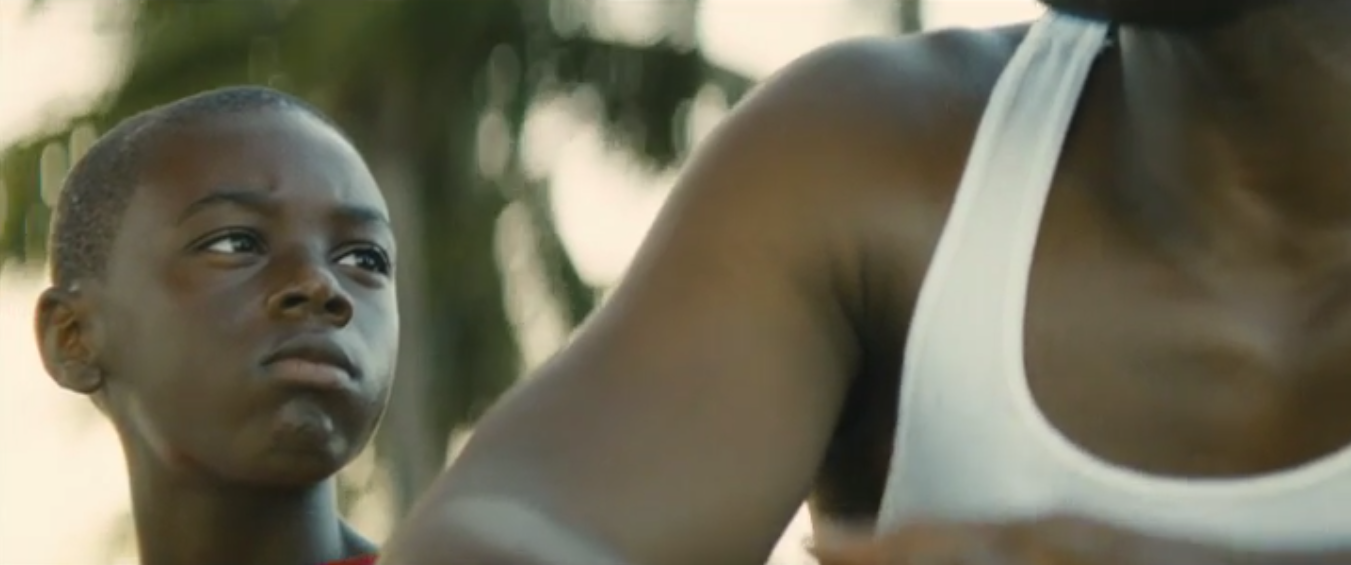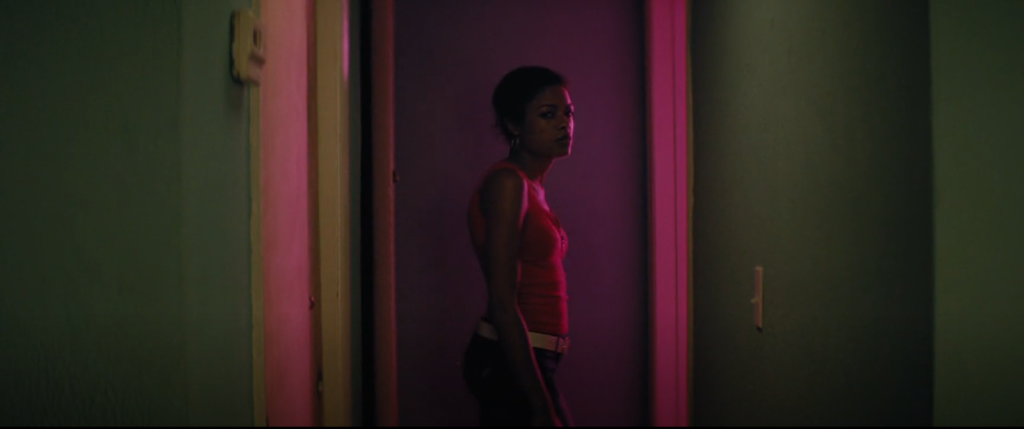
Big close-up: As this shot is so close it gives the audience a distinct focal point to look at. She is breaking the 4th wall (looking straight into the camera) which makes the audience feel she is talking to us. I think the director purposely did tis shot as a big close-up because it makes see the character in a deeper way/level. As the shot is close up, we can see every emotion very vividly. Just looking into her eyes, you can see the panic or the unstable mentality.

Long Shot: This shot shows Chiron at the train station alone. The way he is shat in the middles with the whole of the city landscape behind him helps to signify he’s extremely lonely. I think the director has purposely done this to help this audience feel sympathy for him as he’s solitary. As an audience member myself, watching this scene showed me that there is the whole world, but Chiron still ends up alone.
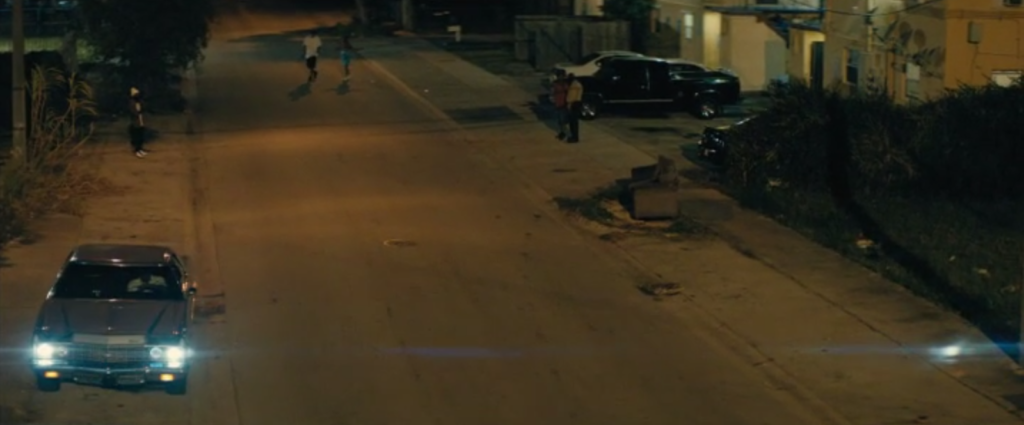
Extreme long shot: This scene shows the area where Juan sells the drugs. The shot helps the audience consume all the different details about this location. It helps us see it’s run down and a quiet area; this signals that it could be a very dodgy area that is very unsafe.
Camera Angles-Moonlight

High Angle: This a shot taken of Chiron walking home from school. This high camera angle can direct the audience’s attention to the vulnerability he is in. It also makes him seem powerless with the shot, even though he is the only one in the frame he is alone which calls out he is alone. This is also followed on throughout the film as there are many other scenes where’s we see Chiron alone.
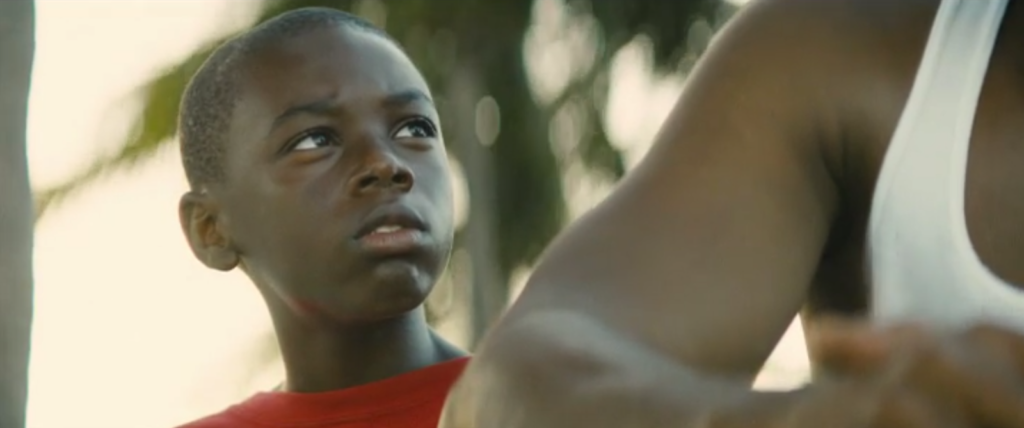
Low Angle: This low angle shows little looking up at Juan. The camera angle lets us see his whole face and reaction. As a viewer this angle could also signify that he is ‘little’ even though they are both sitting down the angle can help represent that his name signifies his height.
Eye-line Angle: An eye line angle helps us see the image in the frame at a ’natural’ position. In this case and in this scene, Black and Kevin are having a conversation. This angle can let the audience clearly see the two characters talking.
Camera Movements

Pan Right: This scene is when Chiron (black) is talking to his mum in her garden. The way the camera slowly focuses makes the viewer feel they are watching this scene from the background. It also clearly shows how closed off the characters in the location.
Pan Left: This scene is when Chiron is walking home from school and the camera instantly moves to Paula (his mum) and puts the focus onto her.

Track in- Track out: In this scene the camera slowly tracks onto little when he is in the field with his friends. The camera shows that he is feeling disconnected with his friends as it shows the viewer he is left out/alone even when he’s with his friends.











